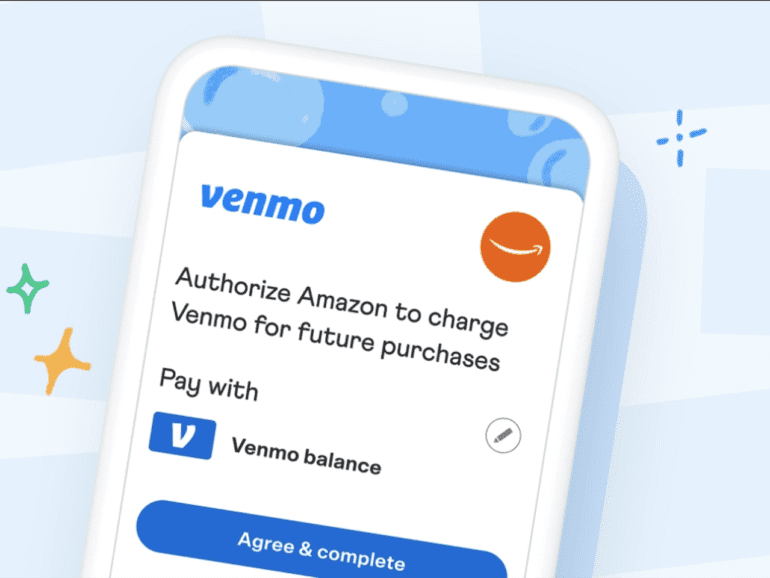The following is a guest post by Andy Newman, VP of Business Development Wildfire Systems.
Amazon’s October 2022 announcement declaring it would accept Venmo as a form of payment was a significant milestone for the fintech industry.
This move marked the first time a major retailer has embraced a payment-to-payment (P2P) application as a form of tender. It was a significant step forward for younger consumers, particularly Millennials and Gen Z, who have embraced one-tap payments more than any previous generation.
The impact of the Amazon-Venmo partnership could have further implications, as other retailers are also likely to take note of this move and may consider accepting Venmo as a form of payment in the future. Amazon’s deal with Venmo has the potential to set a new standard for payment tenders in general, and other brands are likely to follow in its footsteps.
Related:
Due to this development, the core challenge for banks and card issuers is that the payment form within Venmo must be linked to a checking or savings account (ACH) rather than a debit or credit card. This means Venmo transactions with Amazon will incur lower processing fees for retailers.
But for banks/issuers, these transactions will also sidestep the interchange fees that banks and card issuers typically earn. This has an enormous potential to cut into banks’ & card issuers’ revenue streams, and they need to find new ways to compensate for the lost income.
Payment trends
Let’s take a step back and look at some current trends in the payment industry and how banks/issuers capitalize on these trends to build strategies to replace interchange revenue:
- BNPL’s Continued Popularity
While BNPL’s future is nuanced because the industry is mostly unregulated now, that could change shortly. For now, buyers take advantage of interest-free credit. In addition, debit card preference continues to grow, and BNPL is another reason for this.
- P2P Payments
Part of the appeal of using Venmo to enable P2P payments is that the payment happens in near-real time. Banks’ P2P application, Zelle, also offers the appeal of near-real-time payments. Customers’ appetite for fast payments has undoubtedly been whetted, with a recent study indicating that 49.1% of consumers signed up for a “neobank” to access easy P2P features.
- Digital Wallet Growth
Juniper Research forecasts that global digital wallet sales will exceed $10 trillion by 2025: a remarkable 83% increase over 2020. As the march to digitize finance goes on, digital wallets are where the growth will happen.
Longer-term strategies banks and issuers should think about
Banks and card issuers must come to terms with increasing P2P adoption and the growing potential for revenue from interchange to be further compressed. With this in mind, we recommend the following strategies:
Deploy incentives
As the saying goes, “Nothing says I love you like free money.”
Consumers are driven by price (as well as value / getting more for their money) first, and convenience is a close second.
Venmo is capitalizing on this concept to capture tender preference by offering bonus credits when a consumer first sets up a “pay with Venmo” option with a retailer.
For example, Venmo recently partnered with Starbucks to offer consumers 100 bonus Stars by paying with Venmo in-app or adding value to a Starbucks card via Venmo.
This bonus, paired with the ease of paying directly with Venmo in the Starbucks app, is an excellent example of using price (value) plus convenience to drive tender preference.
With this in mind, how can banks/issuers fight fire with fire?
Taking a page from Venmo’s playbook, banks and issuers must make their tender more valuable with promotional incentives or rewards and more convenient.

Capitalize on digital wallets
To this end, banks and issuers can use a fully featured digital wallet solution as a “Trojan horse” to get customers back into the fold and link their credit cards as the preferential payment vessel. Indeed, banks/issuers should leverage their position as trusted partners in the customers’ financial life to redirect consumer attention back to their card products.
Must-have digital wallet features:
- It must have P2P capabilities to keep the customer engaged. Consider this: the predominant use case for customers signing up for neobanks is to access easy P2P payments. This feature is clearly in demand by consumers, especially Millennials and Gen Z.
- Offer a virtual card that ties to the digital wallet as the customer’s primary payment tender. The ease and convenience of a virtual card far outweigh using Venmo, especially at retail point-of-sale.
- Creatively deploy promotional budgets by delivering incentives to make a bank card more attractive. Interchange, historically, has funded these incentives and rewards, but as the compression on interchange plods on, banks and issuers might look outside of those “traditional” funding means for rewards. Instead, they may apply customer acquisition budgets to deploy signup, or minimum-spending bonus offers to create a preference for their tender within the digital wallet. Another option is to consider leveraging cashback shopping rewards funded by merchants.
- Integrate loyalty program stores of value. Digital wallets allow loyalty programs like air miles to store and integrate easily. The same goes for any cashback rewards programs that the bank/issuer may offer to cardholders directly. Create convenience and drive tender preference by making it easy for the consumer to access those loyalty program rewards.
In conclusion, the recent partnership between Amazon and Venmo may set a new standard for P2P as a preferred payment tender.
This makes it more than likely that other retailers will follow suit. By embracing digital wallets and leveraging their position as trusted partners in their customers’ financial lives, banks and issuers can re-capture consumer attention and drive tender preference.
Ultimately, the success of these strategies will depend on the ability of banks and issuers to provide value and convenience to their customers, particularly Millennials and Gen Zers, who are driving the trend towards one-tap payments and digital wallets.


